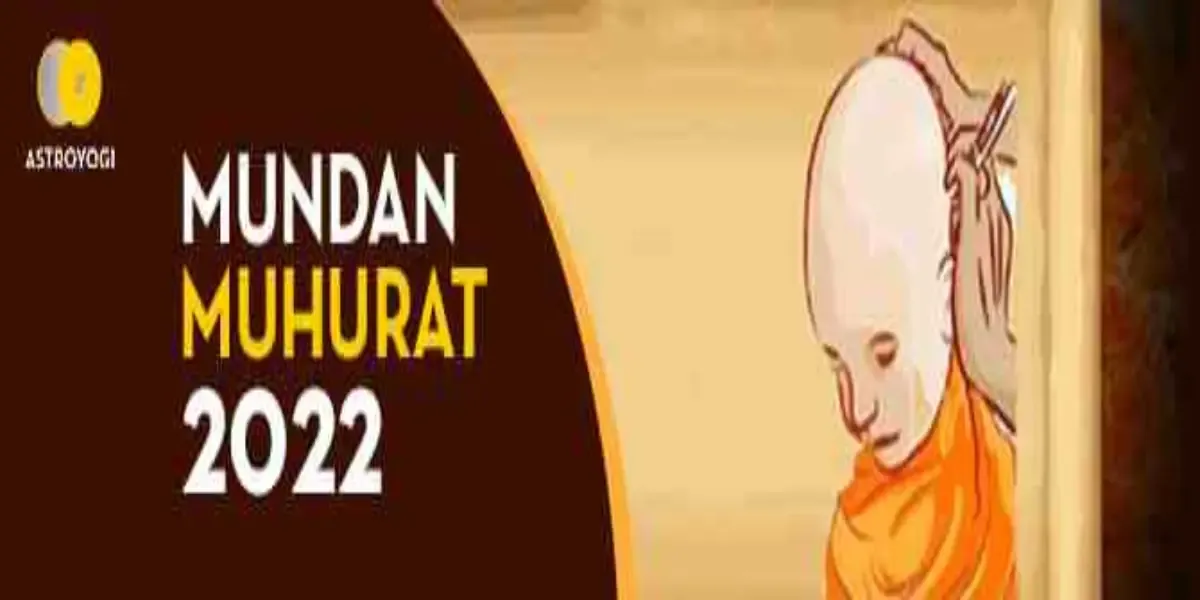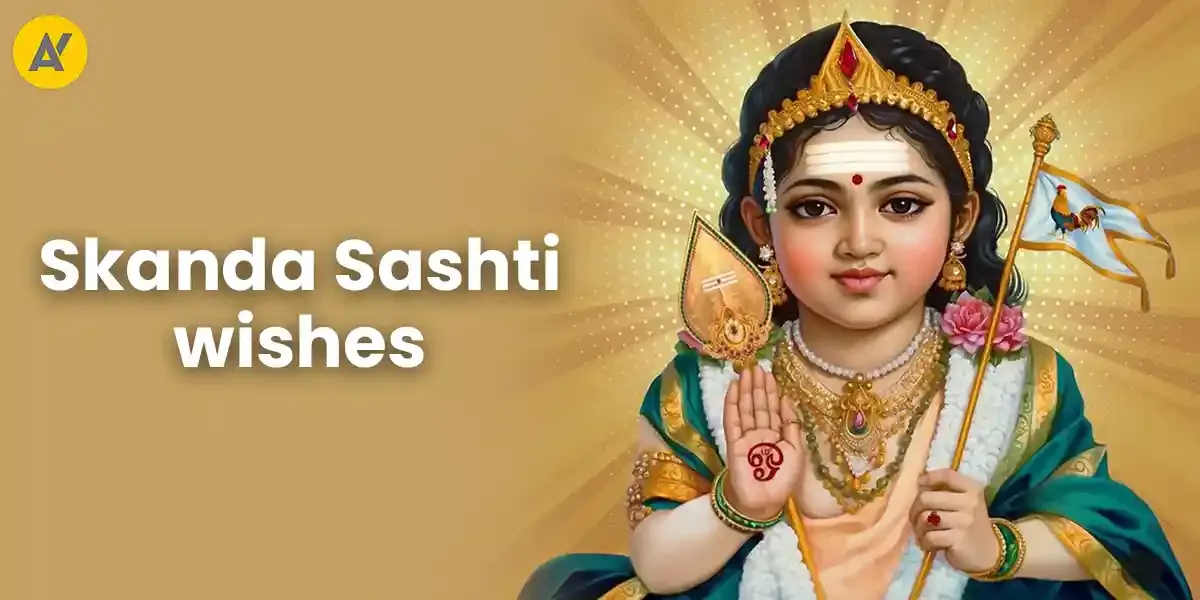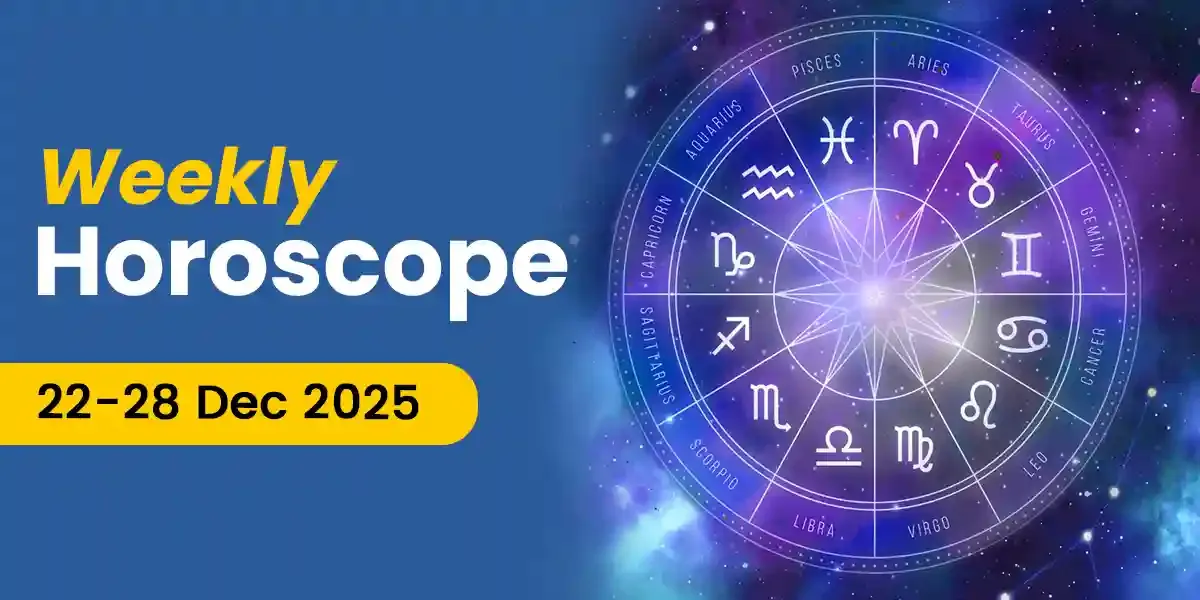
According to Hinduism, there are sixteen sacraments or Solah Sanskars in the life of a human being from their birth to death. The sixteen rites include marriage, Annaprashan, Namkaran, etc., and the Mundan ceremony is one of them. This particular ceremony is performed in childhood and is mandatory for every child. This special ceremony is not only a religious activity, but it also has scientific relevance.
In the sequence and importance of rites, Shishu Mundan Sanskar is considered an essential rite that every individual should go through. Mundan Sanskar or ceremony is the eighth Sanskar out of the sixteen Sanskars as per the Hindu scriptures, and it is performed with complete faith and devotion. It is believed that the Mundan ceremony bestows the young child with prosperity, happiness, and good luck.
Let’s get to know more about this ceremony.
Mundan Ceremony: Get to Know More!
Are you wondering what the Mundan ceremony is? Simply put, this ceremony is the first hair removal of the infant. In Hinduism, this specific ceremony has immense significance and importance. The Mundan ceremony is not a modern concept; it has been a part of the Indian culture since time immemorial. Mundan ceremony is known by other names such as Chaul Mundan, Chudakarana, Chura Karm, Jadula, Chaul Karm Sanskar in different cultures and regions in India.
A Mundan or tonsuring ceremony is about shaving off the baby's first hair or birth hair. Usually, the hair is plucked or shaved for the first time after the baby is born from the mother's womb during this ceremony. When a baby is in their mother's womb, several harmful bacteria get settled in their hair. Hence, the Mundan of the child should be done to free them from any such harmful bacteria. The Tonsure ceremony is a rite that people execute with conviction, belief, and dedication.
Importance And Significance of The Mundan Ceremony
The sixteen rites observed and followed in Hinduism have been in practice since ancient times, and all of them are approved by knowledgeable sages. It doesn't matter how modern one gets; most Indians still pay a lot of attention and place much faith in ceremonies like the Mundan. Most people don't ignore such rituals or ceremonies at any cost as the faith and years of customs and traditions always push them to look at the brighter and positive side of such ceremonies. This is why the Mundan ceremony is considered important as per Indian tradition.
Shaving a child's hair is the same thing as pruning a particular spot on a tree. When you prune a specific area on a tree, you will notice that specific spot has the most leaves sprouting out of it. This is because when the tree detects the trimmed area, it directs all its energy to that particular area, stimulating new growth and healing the tree faster. This holds true for the tonsuring or Mundan ceremony for children as well. The ritual of Mundan is mentioned in the Yajurveda. In the Yajurveda, the ceremony has been touted as being highly beneficial for a young child's physical development, strength, and well-being.
Read also 👉 Marriage Muhurat 2022 | Annaprashan Muhurat in 2022 | Namkaran Muhurat in 2022 | Griha Pravesh Muhurat in 2022
Let's get to know more about how the Mundan ceremony can benefit an individual.
- Pruning the tree is equivalent to shaving or doing a Mundan of a child's hair. When the shaving is done, the energies in the body rush to the child's head. This leads to an individual experiencing a more peaceful mind, and one will notice a tremendous shift in their mental state.
- The ceremony helps in better and proper hair growth.
- The Mundan also removes the negative energies.
- It is commonly believed that when a baby is conceived, the effects of their terrible as well as good deeds from the previous births may be left on the strands of their hair. This is why when the baby’s hair is shaved, it should be done in accordance with the customs, and proper arrangements should be made for the ceremony. Moreover, shaving a baby's birth hair frees them from the Karma of their previous life.
- Shaving the hair helps keep the child's head cool and saves them from unwanted irritation, especially during the hot summer months. This, in turn, keeps the body temperature of the child normal.
- The ceremony protects the young child from the evil eye.
- After the Mundan ceremony, the toothache and any other pain or discomfort caused by teething don't affect the child much.
- The ritual teaches the children to maintain cleanliness at all times.
- The ceremony is done with the belief that it purifies and cleanses the child. It cleanses the young child's body and soul.
- When the child's birth hair is shaved, more sunlight can reach their head rapidly. Vitamin D enhances the blood circulation in the scalp, which helps in better hair growth.
- Getting the Mundan ceremony performed can improve a young child's mental ability, physical strength, educational development, and academic progress. It also ensures that the child does not suffer from health-related issues.
Simply put, getting the rite executed ensures that the child will have a harmonious and happy life. The ceremony bestows the child with long life and a prosperous future.
Due to the abundance of benefits that the Mundan ceremony offers, people choose to conduct this ceremony for their children. As Mundan Sanskar is one of the most critical ceremonies or rites of passage done after the birth of a child, thus it should only be performed at an auspicious time. This is where Shubh Muhurat plays a key role. One gets to enjoy all the benefits of the Mundan ceremony only if it's performed on an auspicious Muhurat.
If you want to get a Mundan ceremony conducted, you will have to make an effort to find the right Mundan Muhurtat in 2022.
However, the critical question is, do you know what Muhurat is?
In Vedic astrology, the Muhurat or Muhurta is the opportune, auspicious, or favorable moment or a time span. It is commonly believed, especially in Hinduism, that when a task or work is carried out in a Shubh Muhurat, the chances of success increase, and the results are fruitful. Thus, it is essential to consider the Shubh Muhurat before any critical or demanding task or auspicious function, such as the Mundan ceremony.
For centuries, calculating the Shubh Muhurat and starting any auspicious work based on the auspicious Muhurat have been prevalent. According to Vedic astrology, the Shubh Muhurat is that specific time when the Nakshatras (constellations) and the position of the planets are deemed to be auspicious for performing a particular task. This is why people firmly believe that adhering to the Muhurat will help them incur more successful outcomes without meeting any obstacles. As per Hindu traditions, the Mundan ceremony should be observed on an auspicious date and time. This is where Astroyogi's Mundan Muhurat 2022 can be of enormous help.
Do you want more information about the Mundan ceremony and its auspicious date and time? If yes, the Astroyogi astrologers can help you out!
Mundan Muhurat 2022: Find All About It Here!
Getting the Mundan ceremony executed on a Shubh Muhurat is of utmost importance. To help you choose the most suitable and promising Muhurat, here are the upcoming Mundan Muhurat dates for 2022.
Explore the Mundan Muhurat 2022 dates here!
Mundan Muhurat in February 2022
- 3rd February 2022 (Thursday) - 06:16 AM to 04:34 PM, (Nakshatra - Shatabhisha)
- 7th February 2022 (Monday) - 06:54 AM to 06:58 PM, (Nakshatra - Ashwini)
- 11th February 2022 (Friday) to 12th February 2022 (Saturday) 03:32 AM to 03:12 AM (Nakshatra - Mrigashirsha)
- 14th February 2022 (Monday) - 06:49 AM to 08:28 PM (Nakshatra - Punarvasu)
- 21st February 21 2022 (Monday) - 06:43 AM to 07:57 PM (Nakshatra - Chitra)
- 28th February 2022 (Monday) to 1st March 2022 (Tuesday) 07:02 AM to 03:16 AM (Nakshatra - Shravana)
Mundan Muhurat in March 2022
- 24th March 2022 (Thursday) - 01:13 PM to 05:30 PM (Nakshatra - Jyeshta)
- 28th March 2022 (Monday) - 06:08 AM to 04:15 PM (Nakshatra - Shravana)
- 30th March 2022 (Wednesday) - 06:05 AM to 10:48 AM (Nakshatra - Shatabhisha)
Mundan Muhurat in April 2022
- 20th April 2022 (Wednesday) - 01:53 PM to 11:41 PM (Nakshatra - Jyeshta)
- 25th April 2022 (Monday) - 05:40 AM to 02:12 PM (Nakshatra - Dhanishta)
- 26th April 2022 (Tuesday) - 01:38 AM to 05:39 AM (Nakshatra - Shatabhisha)
Mundan Muhurat in May 2022
- 4th May 2022 (Wednesday) - 05:32 AM to 07:33 AM (Nakshatra - Mrigashirsha)
- 6th May 2022 (Friday) - 09:20 AM to 12:33 PM (Nakshatra - Punarvasu)
- 13th May 2022 (Friday) to 14th May 2022 (Saturday) - 05:27 PM to 05:26 AM (Nakshatra - Hasta)
- 18th May 2022 (Wednesday) - 05:24 AM to 08:09 AM (Nakshatra - Jyeshta)
- 27th May 2022 (Friday) to 28th May 2022 (Saturday) - 11:48 AM to 02:26 AM (Nakshatra - Ashwini)
Mundan Muhurat in June 2022
- 1st June 2022 (Wednesday) - 05:19 AM to 01:00 PM (Nakshatra - Mrigashirsha)
- 2nd June 2022 (Thursday) to 3rd June 2022 (Friday) - 04:04 PM to 12:17 AM (Nakshatra - Punarvasu)
- 4th June 2022 (Saturday) - 02:42 AM to 05:19 AM (Nakshatra - Pushya)
- 9th June 2022 (Thursday) to 10th June 2022 (Friday) - 08:21 AM to 06:41 PM (Nakshatra - Hasta)
- 18th June 2022 (Saturday) - 02:59 AM to 05:19 AM (Nakshatra - Shravana)
- 23rd June 2022 (Thursday) - 06:14 AM to 09:09 AM (Nakshatra - Ashwini)
- 23rd June 2022 (Thursday) to 24th June 2022 (Friday) - 09:41 PM to 08:04 AM Nakshatra - Ashwini)
- 30th June 2022 (Thursday) to 2nd July 2022 (Saturday) - 10:49 AM to 03:56 AM (Nakshatra - Punarvasu)
Mundan Muhurat in July 2022
- 6th July 2022 (Wednesday) - 11:44 AM to 07:49 PM (Nakshatra - Hasta)
- 8th July 2022 (Friday) to 9th July 2022 (Saturday) - 06:25 PM to 05:26 AM (Nakshatra - Swati)
If you seek to get your child’s Mundan conducted, make sure you abide by the Shubh Muhurat in 2022.
Check Here: 👉 Today Nakshatra | Today Panchang | Today's Choghadiya
When Should The Mundan Sanskar Be Performed?
As mentioned above, the Mundan ceremony is one of the Solah Sanskars in Hinduism. This particular ceremony is performed post the birth of a child. In this ceremony, the child's hair is shaved following their birth. It is meant to improve the baby's health and luck and offer them prosperity. To find a suitable date and time for the Mundan ceremony and to make sure that the ceremony is conducted as per rituals and customs, seek the help of a professional astrologer.
Here are some important things you need to keep in mind while calculating the Mundan Muhurat.
- According to astrology, it is regarded as auspicious to perform the Mundan Sanskar, or the Tonsure rites during the odd years, like third, fifth, or seventh year abiding by the Shubh Muhurat for the Mundan. The odd years are auspicious for the boy child. The girl child also gets their hair shaved. The even years, i.e., the second, fourth, sixth, or eighth year is for the girls to get their hair shaved.
- Some favorable Nakshatras are Jyestha, Pushya, Revathi, Punarvasu, Chitra, Mrigashira, Hasta, Ashwini, Shravana, Swati, Dhanishtha, and Shatabhisha for the ceremony.
- Always ensure that the Muhurat falls on Monday, Wednesday, Thursday, and Friday as these days are considered auspicious for the ceremony.
- When it comes to Tithi, it is best if the ceremony is conducted on Dwitiya, Tritiya, Panchami, Saptami, Dashami, Ekadashi, or the Thrayodashi Tithi.
- The Mundan ceremony should be performed before the Ashadhi Ekadashi in the Aashadh month. It should be performed in the months of Magh and Phalguna.
- The auspicious Lagna such as Dwitiya, Tritiya, Chaturthi, Shashthi, Navami, and Dwadashi are great picks for the ceremony.
Along with this, you should also remember that the ceremony should not be performed during the Hindu months of Jyeshtha, Chaitra, or Vaishakha. Some scholars also believe that the Mundan ceremony should be prohibited during a child's birth month or birth Nakshatra. Apart from this, if the Moon is situated in the fourth, eighth, twelfth, or the house of opponents, it is considered inauspicious to conduct the Mundan ceremony.
However, to get accurate information on what date and time will be the most propitious to conduct the Mundan ceremony, it's best to consult with professional and skillful astrologers as they will guide you in the best possible way. When you approach a skilled astrologer, they can look at your child's birth chart or Kundli and figure out the most suitable Muhurat for Mundan. To find a suitable Muhurat, the astrologer has to consider numerous factors such as the Nakshatra, Vaar (day), Tithi (date), placement of planets, etc.
How Is The Mundan Ceremony Performed?
Every family has its own customs for performing the Mundan ceremony. Here is how the Mundan ceremony is generally performed.
- First and foremost, the Mundan should be performed on a specific date and time.
- A homam or havan should be performed by a priest.
- The mother should sit with the child in her lap and face the West direction of the sacred fire. The baby’s face should also be towards the West.
- The priest must shave or cut off a portion of the child's hair while chanting holy hymns. Then the rest of the hair is shaved off by the barber. In many families, the child's father performs the initial bit of the ritual instead of the priest.
- The child's shaved head is washed with the holy water from the river Ganga. After this, a paste made of sandalwood and turmeric is applied to their head. This is said to be beneficial in healing any cuts or nicks on the head, while simultaneously, the mixture also cools the head.
- The shaved hair is offered to a sacred river like the river Ganga or offered to a divine deity.
- After shaving, the priest and the barber are given donations and food.
- In some cultures, a tuft of hair is left on the child's head. The tuft of hair is known as 'shikha,' 'bodi' or 'choti.'
If you want to learn more about Mundan Muhurat 2022, expert Astroyogi astrologers can be of massive help. So, reach out now!
✍️ By- Team Astroyogi
Explore More 👉Tarot Reader 2022 | Horoscope 2022 | Numerology 2022 | Rashifal 2022
Our in-house team of writers comprises of vibrant, like-minded, and curious souls who are passionate about helping people find joy and motivation through the magic of words. Our writers are keen on using their skills to make the study of divination sciences a guiding tool in people's lives. They hold expertise in writing on a myriad of topics related to Indian Astrology, Spirituality, Planetary Movements, Vastu Shastra, Numerology, and Tarot among several others. The Astroyogi team aims to write articles that can help the readers lead a life of peace and tranquility whilst enjoying the many ups and downs of life!


































